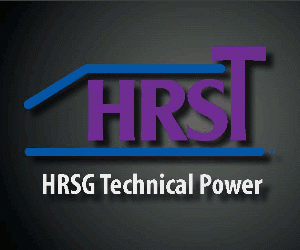Siemens Energy Day during the virtual 2021 Combined Cycle Users Group (CCUG) conference gave users plenty to think about to keep their plants “relevant” as renewables continue to claim a larger share of generating capacity. Presentations covered the more immediate options for upgrading, optimizing, weatherizing, and cyber-securing your plant, but also longer-term options like adding green hydrogen capability, battery storage, synchronous condensers, and other equipment for grid stabilization.
Dilshan Canagasaby, head, Integrated Product Solutions, kicked off the day with a few slides underscoring what the Siemens Energy “brand” stands for on the global stage. Then the technical content started flowing. What follows here are the highlights. Readers are urged to contact Canagasaby [link to dilshan.canagasaby@siemens-energy.com] with questions or for deeper discussion on the presentations.
James Loiselle, principal engineer, Integrated Product Solutions, and Anil Peravali, project engineering manager, Plant Solutions Engineering, covered plant assessments for flexibility, upgrades, performance, and operational reliability—such as weatherization (Fig 1).
The presentation included several combined-cycle use cases from customers with different GT frames seeking individual or a combination of the above assessments. One underlying message was that such assessments are good for evaluating the plant operational and design limitations and developing tailored solutions addressing specific market needs and maximizing asset value.
Weatherization is top of mind these days after the catastrophic loss of the Ercot grid in Texas this past February. Loiselle and Peravali gave statistics on this event, including the astonishing one that lack of weatherization and auxiliary system maintenance led to shutdown of 14,000 MW of gas-fired generation in the state.
Fair warning: Most plants’ operating envelope may be unsuitable for extreme weather events, they said. Siemens Energy is issuing a white paper on this topic which addresses the approach to identify site-specific limitations and develop solutions to increase operational reliability during extreme weather.
Continuous monitoring of critical thermodynamic, mechanical, and electrical parameters supports this objective. If your plant is not well-equipped for M&D, Siemens Energy can help, with a diagnostics level of service (limited amount of feedback) and a continuous optimization level of services (regular communication about performance and solutions).
Christopher Bonilha, manager of plant optimization, noted that renewables are expected to account for 50% of generation by 2030 and 67% of decentralized power. He stressed having a multi-year optimization plan, rather than conducting a single plant assessment. That way, you can make the best maintenance decisions continuously to remain in optimal performance.
The presentation includes several individual examples of sustaining top performance accompanied by return-on-investment estimates: Adding HEPA filters to slow GT compressor degradation, tuning for cold weather, changing compressor control logic to avoid a pressure-ratio limit from causing GT unloading, quantifying and validating losses in the HP bypass attemperator, optimizing LP drum-pressure set point, monitoring condenser backpressure for efficiency loss, and optimizing cooling water pump operation.
In response to an audience question, the presenters noted that Siemens Energy performs continuous monitoring for 10,000 MW of customer capacity, although that includes sites where only the GT is monitored.
Galen George, director of business development and marketing, covered startup optimization and cybersecurity (Fig 2). He noted that some customers will start up their units 30 minutes early to meet anything from a 30-min to 3-hr start time. While control mods for faster starts usually mean greater automation, Galen stressed that “control is not taken away from the operator.” For example, the system may tell the operator when to do something, but the operator actually has to do it. In other words, they still have to pay attention. The slides included a project executed in the USA Midwest that reduced startup times and fuel costs by 50%.
Cybersecurity. George’s cyber-related slides quantified what we all know implicitly: Connected industrial digital devices have increased eight-fold since 2011, which means the “threat environment” has also grown exponentially. Most of the slides were intended to make the case for including an industry expert like Siemens Energy as service providers in your vulnerability management programs.
Audience questions addressed how to back up, save, and test systems (Siemens Energy recommends at least once a day, a function which can be automated, though older units may have manual only); then storing the backup files on a drive within the system, then transferring to long-term storage within the DMZ. Another attendee inquired about wireless devices and mesh networks. George said these are “much more vulnerable” and suggested continuous intrusion monitoring and detection.
Beyond the GT and CC. Jim Badgerow, senior project manager, Expanded Scope Solutions, covered battery solutions to reduce costs and/or add revenue streams. One of the more interesting use cases is to avoid paying demand charges for the electricity needed to frequently start up combined cycles as well as provide black-start capability (Fig 3).
The day concluded with Thorsten Wolf, product manager, plant innovations, presenting on opportunities for green hydrogen and grid stabilization. Main points:
-
- Surplus (often “spilled” or wasted) renewable energy can be harnessed to produce and store “green” hydrogen for later use.
- Hydrogen substitution for methane in natural gas does not lead to a linear reduction in carbon—for example, a 30% hydrogen mix by volume reduces carbon by 10%.
- Even low percentages of hydrogen may require changeout of carbon steel for hydrogen handling and transport, because of embrittlement risks, in plant fuel handling equipment depending on site-specific variables.
- Hydrogen storage has many considerations as it has to be compressed to 2400-2600 psig and un-lubricated reciprocal compressors may be necessary.
- Steam turbine/generators at shut-down fossil plants can be converted into synchronous condensers for grid stability by adding a clutch and other equipment.
- Siemens Energy is developing static voltage compensator (SVC) technology to respond instantaneously for frequency stabilization.





